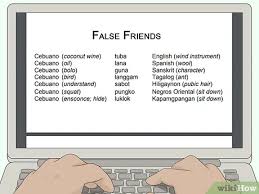How to Start Learning Bisaya

Bisaya, also known as Cebuano, is an Austronesian language spoken by nearly 20 million people primarily in the Central Visayas region of the Philippines. It bears similarities with other Philippine languages such as Tagalog and shares some linguistic aspects with Malay and Indonesian. As the second most widely spoken language in the country after Tagalog, Bisaya offers unique insights into Filipino culture and history. This article will guide you through how to start learning Bisaya, from initial steps to advanced learning techniques.
1. Familiarize Yourself with the Language
Before diving into the nitty-gritty of learning Bisaya, take some time to familiarize yourself with the language. This includes understanding its origins, structure, and phonetic profile. Listen to native speakers through media like radio, TV programs, or YouTube channels focusing on Bisaya content. This will help train your ear and pronunciation skills.
2. Learn the Basics
Start with mastering the alphabet (which consists of 20 letters), pronouncing individual syllables, and forming words. Invest your time in learning basic greetings, common phrases, numbers, colors, days of the week, and essential vocabulary that will be useful in everyday conversations.
3. Use Online Resources
Numerous online resources are readily available for learning Bisaya. These may include blogs, YouTube channels, social media groups, or language exchange communities where you can connect with native speakers and practice conversing in Bisaya. Here are a few popular options:
– Languagereef.com (a website featuring free lessons)
– Learn101.org (a comprehensive resource that uses audio files)
– Youtube Channels such as “Bisaya Buddy” or “Judy D Learns”
4. Take a Course or Hire a Tutor
While self-learning is helpful during the initial stages of learning Bisaya, eventually enrolling in a course or hiring a native speaking tutor will significantly aid your progress. Working with a qualified instructor provides the opportunity for personalized lessons, accurate pronunciation, and guidance in navigating the nuances of the language.
5. Practice Regularly
Like any other language, consistency is crucial when learning Bisaya. Set aside time each day to practice by reviewing vocabulary, watching movies or TV shows in Bisaya, or engaging in conversations with native speakers. The more you immerse yourself in the language, the quicker you will see improvement.
6. Engage with the Culture
Bisaya is deeply connected to the culture and traditions of the Visayas region. Engaging with this rich history through literature, music, and art not only makes the learning process more enjoyable but also provides valuable context for understanding this unique language.
7. Be Patient and Persistent
As with any language endeavor, patience and perseverance are key to success. Learning Bisaya can be challenging at times, but staying motivated and committed to your goals will ultimately pay off. Remember that language mastery takes time and continuous effort – don’t be disheartened by setbacks and embrace your progress.
In conclusion, starting to learn Bisaya can be an exciting and rewarding journey. By incorporating these steps into your learning routine, you’ll quickly build a solid foundation in both language skills and cultural understanding. Enjoy the process as you venture into new linguistic territories!






